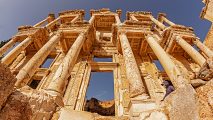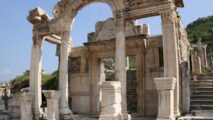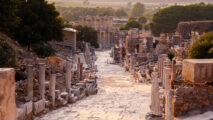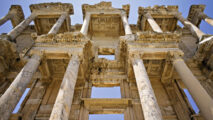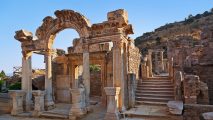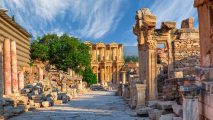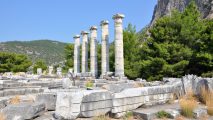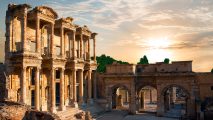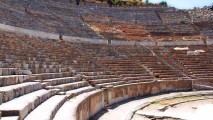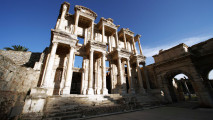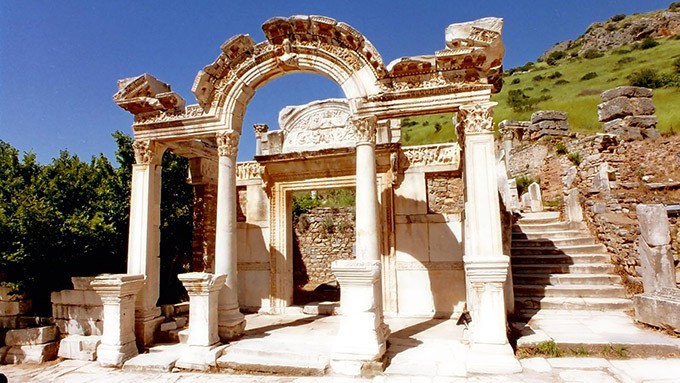
The Seven Churches of Revelation, also known as the Seven Churches of Asia or Seven Churches of the Apocalypse, are situated in Asia Minor. These churches played a significant role in Early Christianity and are mentioned in The New Testament of Revelations. According to John the Apostle, he heard a powerful voice instructing him to write a book. In this book, Jesus Christ commanded him to “Write on a scroll what you see and send it to the seven churches: to Ephesus, Smyrna, Pergamos, Thyatira, Sardis, Philadelphia, and to Laodicea.”
While the seven churches were physical establishments located in the western part of Asia Minor, they also symbolize the Christian communities residing in each respective city, as depicted in the Book of Revelations. Additionally, it is believed by some that these seven churches represent distinct periods in the history of the Church.
According to John the Apostle, each city is associated with an angel. These angels could represent individuals or spiritual beings who conveyed messages to each church, urging them to repent for their sinful actions.
Ephesus, situated in Selcuk, a town of Izmir, received praise for their perseverance. However, they were cautioned for forgetting their initial love for God. Christ instructed them to repent from the ways of the Nicolaitans. Today, the well-preserved ruins of Ephesus can be visited, along with related sites such as the Basilica of Saint John, the Great Theater of Ephesus where Apostle Paul preached, and the Ephesus Museum.
Smyrna, located in Izmir, is one of the two churches that was not criticized. They were commended for their endurance, but false Jews were mentioned in the message to them. Christ warned them of an upcoming period of tribulation that might lead to loss of life or imprisonment. Presently, Izmir stands as the third largest city in Turkey, and the ruins of Smyrna can be explored. The related sites in Izmir include the Saint Polycarp Church, Agora, and the Izmir Archaeological Museum.
Pergamon, found north of Izmir, was criticized for spreading false teachings. It is described as the city where Satan has his throne. Christ instructed them to repent from the doctrines of Balaam and the Nicolaitans. The ruins of Pergamon can be visited today, and they are relatively well-preserved.
Thyatira, situated in Akhisar, Manisa, was praised for their growing faith and service. However, they were warned about their tolerance for a woman named Jezebel, who claimed to be a prophetess. They were ordered to repent from following the teachings of Jezebel. The ruins of Thyatira are protected within a fenced-off area in modern Akhisar town.
Sardis, located in Manisa, approximately 50 miles east of Izmir, was described as a church devoid of enthusiasm. They were urged to wake up, or else their names would be erased from the book of life. Presently, Sardis exists solely as an archaeological site, well-preserved near a small town called Sart.
Philadelphia, found in Alasehir, Manisa, was another church that did not receive rebuke or condemnation. Despite their limited strength, Philadelphia was promised an open door that no one could shut. Today, only a few ruins remain in Alasehir town, protected by the government.
Laodicea, located in Denizli, is often regarded as the most problematic of the seven churches. It is referred to as a lukewarm church, where spiritual apathy masked their material wealth. Although they claimed to be self-sufficient, Christ viewed them as poor due to their lack of spiritual purity. Laodicea is portrayed as an end-times church, characterized by lukewarmness and a materialistic spiritual stupor. They were instructed to repent from their focus on material riches and instead invest in the refined gold of Him who has overcome. Presently, Laodicea stands solely as an archaeological site in the city of Denizli.
It is important to note that these descriptions of the seven churches provide insights into their historical and spiritual contexts. While the physical churches and cities may have evolved or disappeared over time, the messages conveyed to them continue to hold symbolic significance for Christians throughout history.


